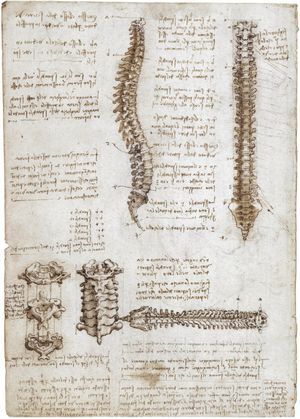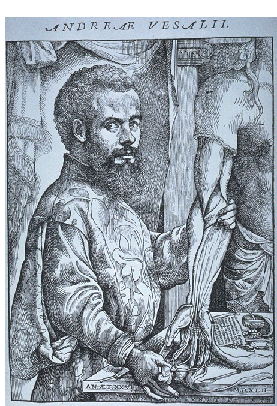|
HISTORY
In ancient times, trauma and infections were the most common cause of death. It is likely that some of the Egyptian mummies that were found to have spinal tuberculosis also had arachnoïditis.
The initial relationship was clearly represented by Leonardo da Vinci that drew, in details, among many other organ-systems the brain, the spinal cord, the spinal nerves and the sympathetic chain as a whole system through observing dissections performed by anatomists at the University of Padova (1504-1508) which was, at the time, the most advanced medical center of learning.
Some year later, the connection of the brain to the nerves contained in the spinal canal was clearly described in Andreas Vesalius (Brussels 1514) “De Humanis Corporis fabrica”.
It was Domenico Cotugno, from Naples, that, in 1764, after noticing that the cerebral ventricles contained the same fluid as that, present in the spine, he called it cerebrospinal fluid. He also studied the inner and middle ear noticing that the semicircular canals also contained fluid which he related to the dizziness that accompanies some type of headaches. He also related algid sciatica only to changes in the composition of the CSF.
Jean-Marie Charcot is considered as the founder of current Neurology and, 140 years ago, described our kind of pain with the different components: “pseudo-neuralgic” for the burning type of pain because there was absence of tenderness along the path of the nerves in the extremities, which was typical of neuralgias. He also stated “sometimes pain is like a girdle along the path of the crural and sciatic nerves and added” there is hyperaesthesia of the teguments in points corresponding to the distribution of the painful nerves. These pains are permanent, or nearly so and they become exasperated in paroxysms. Movement in bed, whether active or passive, provokes the manifestation of these pains. The same holds good, a fortiori, as regards to standing or walking, hence results in impotency, but not from decreased muscle strength” but from the lack of use. It is apparent that he considered this a different entity within the neurological disease of the time as he described “cutaneous anaesthesia” which is circumscribed in patches, while the surrounding peripheral areas may also be affected with the so called “anaesthesia dolorosa”. Charcot distinguished two other types of pain seen in those patients: “boring pains” as those described by patients like “an abrupt and sudden introduction of a pointed instrument, as it would be twisted round on being pressed into the flesh” and “lancination pains” that may or may not co-exist with the previous pains; this type of pains was also called “lightning” or “fulgurating” pains that follow the course of a nerve along which they shoot, like a flash of lightening, as it would be transverse by painful fulguration.
Injections of biological substances into the CSF was soon to be found harmful (Sicard and Salin 1910)…
More in “ History and evolution “ with 65 references ( Aldrete and collaborators).
 
|